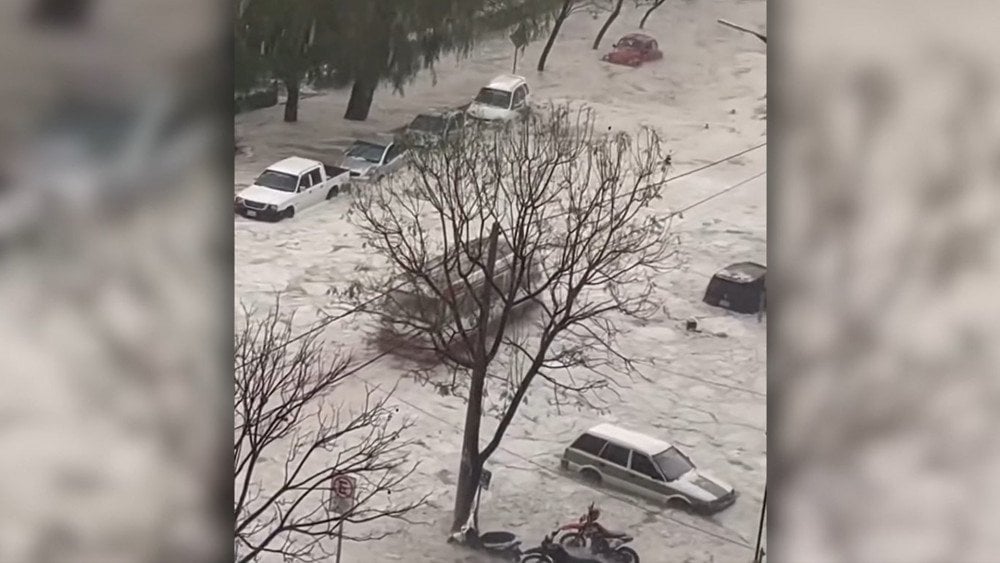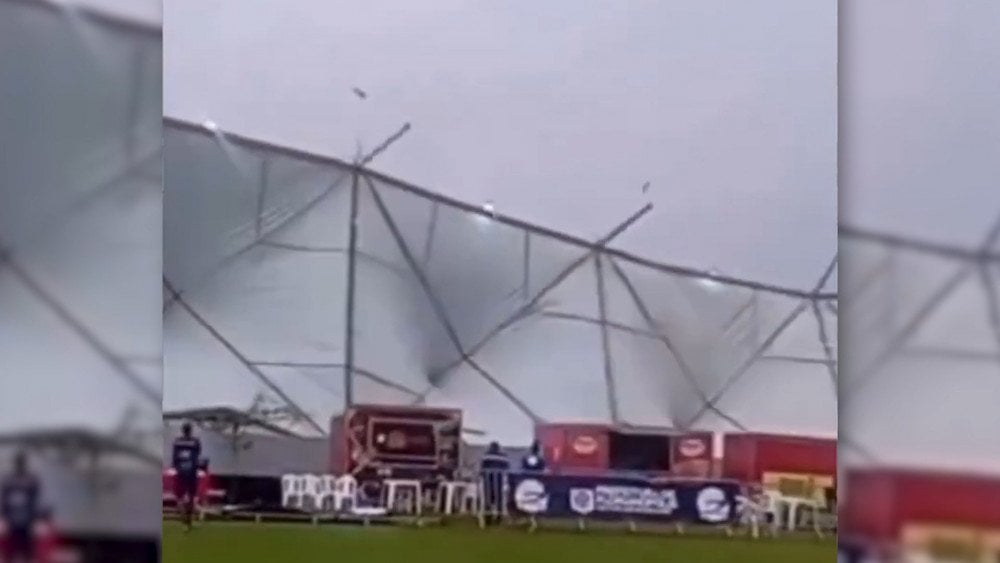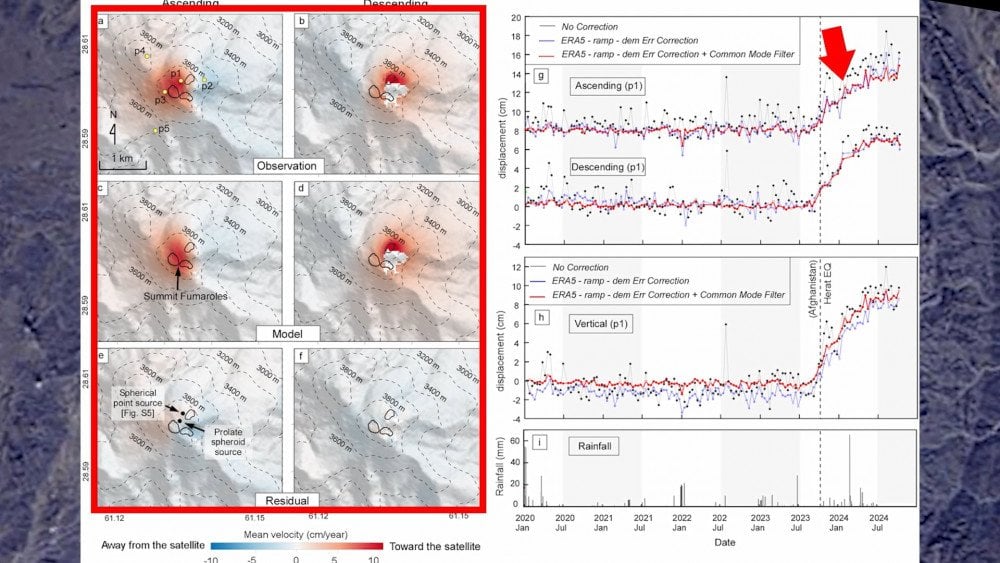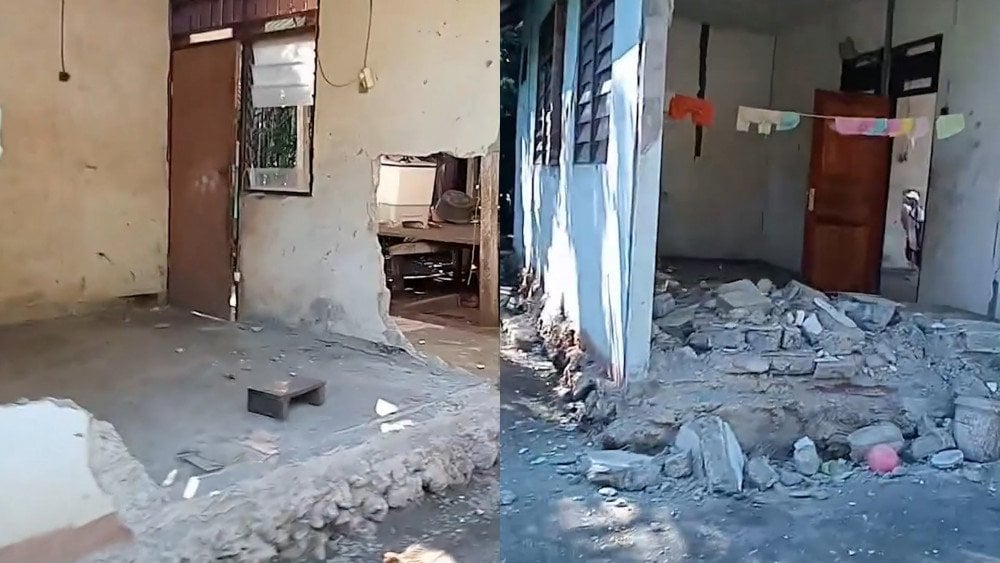Summary of climate disasters on the planet, October 15–21, 2025
Activation of a volcano in the Middle East that had been “asleep” for 700,000 years.
Powerful earthquakes in Southeast Asia.
Anomalous fluid-release zones on the seafloor in Antarctica.
What could possibly connect these events occurring in completely different corners of the planet?
More details are provided below in the summary of past week’s climate events, from October 15 to 21, 2025.
France
On October 20, a deadly tornado struck the Val-d’Oise Department near Paris. It swept through several communes, leaving behind severe destruction: overturned cars, torn-off roofs, fallen trees, and damaged power lines. The municipalities of Ermont, Eaubonne, Franconville, Sannois, Andilly, Montmorency, and the commune of Argenteuil were all affected.

Aftermath of the destructive tornado in Val-d’Oise, France
Traffic on local roads was disrupted, and about 1,700 households experienced power outages. Residents of damaged homes were relocated to a sports hall.
At a construction site in the municipality of Ermon, three large cranes collapsed, crushing cars and damaging nearby buildings. One person was killed and nine injured, four of them in critical condition.
According to the European Severe Weather Database, the tornado in Ermont was preliminarily classified as IF2 on the international Fujita scale, corresponding to wind speeds of 180–220 km/h (112–137 mph).
Meteorologists reported that another vortex was detected around the commune of Chaumont-en-Vexin at the same time, though the damage caused by it was significantly less.
Such events are rare for Val-d’Oise. The last tornado that formed here — an IF1 of lower intensity — occurred more than 20 years ago, on July 16, 2003, near Paris-Charles de Gaulle Airport.
New Zealand
On October 21, dangerous winds and torrential rains forced school closures and caused widespread power outages across New Zealand.
Flights were delayed or canceled, and passenger ferry services were suspended.
Several state highways were closed due to flooding and landslides.
In Hawke’s Bay on the North Island, strong winds overturned a truck, injuring one person.
Severe weather caused chaos in the capital city of Wellington. Wind speeds reached hurricane intensity — 33.53 m/s (120.7 km/h / 75 mph).

In New Zealand, hurricane-force winds toppled trees and brought down metal structures
At one of the city’s intersections, a powerful gust blew a woman onto the roadway, scattering her bag and belongings in all directions. Fortunately, passing cars managed to brake in time.
In a city park on the slopes of Mount Victoria — one of the most popular places for walking and recreation — a tree branch torn off by the wind fatally injured a man.
Although Wellington is known as the windiest city in New Zealand, famous for its howling storms, this time the force of the winds proved unprecedented even for locals.
Bolivia
On October 16, heavy rain and hail caused massive damage to the city of Tarija and its surrounding areas.

Aftermath of a severe hailstorm in Bolivia: streets flooded and covered with a thick layer of ice
Powerful torrents of water destroyed the wall of the Territorial Planning Office building, and the central market was also affected.
Within just a few minutes, city streets and squares were flooded and buried under a thick layer of ice — in some places, hail drifts reached nearly 2 m (6.6 ft) in height.
Hail accumulating on rooftops became so heavy that some could not withstand the weight: the roofs of the regional hospital, several schools, and kindergartens collapsed.
In rural communities of Cercado Province, the storm destroyed crops and caused significant losses for farmers.
Brazil
On October 18, strong winds reaching 100 km/h (62 mph) hit several regions in southern and southeastern Brazil, causing power outages and damaging buildings.
The states most affected were Santa Catarina and São Paulo.
In the state of Santa Catarina, approximately 37,000 homes and businesses experienced a power outage. The state capital, Florianópolis, was hit hardest, with wind gusts reaching 90 km/h (56 mph).
During the children's football tournament Copa FairPlay, the wind lifted a huge tent structure into the air and slammed it to the ground near the training field, causing panic among people. The event was canceled.

A strong wind tore off a massive tent during a children's football tournament in Florianópolis, Santa Catarina, Brazil
Another incident occurred in the state of São Paulo. In the city of Ribeirão Preto, at Arena Beach Ribeirão, a gust of wind ripped the roof off the spectator stand during the international Sand Series beach tennis tournament. Nine people were injured, one of them seriously.
In the city of Matão, the storm toppled trees and tore part of the roof off a medical facility. And in Monte Aprazível, the “Aviva Monte” music festival was canceled after parts of the stage and tents collapsed.
Philippines
From October 18, Tropical Storm Fengshen (known locally as Ramil) struck the northern and central regions of the Philippines, bringing torrential rains, flooding, and landslides.
The islands of Luzon, Visayas, and Mindanao were all hit by the storm.
More than 22,000 people were forced to leave their homes and seek refuge in temporary shelters. Several national highways were closed, and more than a dozen flights were canceled. Large-scale power outages were reported in two provinces — Quezon and Camarines Norte.

Flooding caused by Tropical Storm Fengshen in the Philippines
In Bukidnon Province on Mindanao Island, a major landslide occurred on October 18 after heavy rainfall — a large section of the Bukidnon–Davao National Highway collapsed in the Sitio Palacapao area.
A four-lane stretch of road plunged into a deep ravine. A three-wheeled vehicle was found under the debris — its two passengers are missing.
The highway was closed, and drivers were advised to use detour routes, adding at least 60 km (37 miles) to their journey.
Another tragedy occurred on October 19 in Quezon Province, in the municipality of Pitogo: during the storm, a massive tree fell onto a bamboo house, completely destroying it. Five members of one family, including two children, were killed. Only one teenager survived.
Across the country, the storm claimed at least 7 lives.
Malaysia
On October 15, a powerful storm struck Kuala Langat District in Selangor State. The villages of Sijangkang and Kampung Medan were hit especially hard.
The village chief of one affected community said the disaster struck suddenly: the sky was clear, and he never expected that within five minutes the wind would destroy dozens of homes. According to him, this was the worst tragedy the village had faced in the last 50 years.
The storm generated a powerful tornado that tore roofs off houses, destroyed walls and fences, and twisted metal structures. Trees and power poles were toppled.

Destruction after the tornado in Kuala Langat District, Selangor, Malaysia
At a primary school, part of the roof collapsed, causing panic among students. Eleven children were injured, two of them seriously, and the building was declared unsafe. 1,500 students were moved to remote learning.
The storm also destroyed the office of a Legislative Assembly coordinator, trapping a woman under the rubble; fortunately, rescuers freed her quickly and transported her to a hospital.
In total, more than 40 homes, 6 schools, and a sports hall were damaged. The industrial area also suffered significant destruction.
Iran
The Taftan stratovolcano, located in Iran’s Sistan and Baluchestan Province near the border with Pakistan, had been considered extinct for more than 700,000 years.
According to the Smithsonian Global Volcanism Program classification, an “extinct” volcano is one that has shown no eruptions since the end of the Pleistocene (over ≈ 11,700 years ago) and shows no signs of renewed magmatic activity based on modern geophysical and petrological-tectonic data.
However, a study published in October this year revealed that Taftan is showing signs of reactivation. An international team of scientists from China, Germany, and Spain used satellite observations to detect an uplift of 9 cm (3.5 in) at its summit in just 10 months — from July 2023 to May 2024 — while fumarolic emissions reached 20 tonnes per day, indicating ongoing magmatic degassing.
Fumarolic emissions are gases and vapor–gas mixtures released from cracks, pores, and channels near volcanic vents or in post-volcanic activity zones. They form as magmatic and hydrothermal systems degas after or between eruptions.

Evolution of volcanic deformation: comparison of observations and models, Taftan stratovolcano in Iran
The absence of any subsequent subsidence of the surface indicates that pressure in the volcano’s upper hydrothermal system remains high, and the risk of phreatic or magmatic eruptions at Taftan’s summit persists.
Remarkably, the deformation was not accompanied by rainfall or seismic shocks — the usual triggers for such processes. This means the source of Taftan’s unrest lies within the volcano itself. Scientists believe the cause is either an accumulation of hot fluids and gases in the hydrothermal system or a temporary magmatic intrusion.
Seismic activity
Over the past week, the planet was shaken once again by a series of powerful earthquakes. Fortunately, none of these events triggered a tsunami or resulted in loss of life. However, the unusually high frequency of strong earthquakes is causing serious concern and keeping residents of affected regions in a constant state of tension.
On October 16 at 14:48 LT, a magnitude 6.6 earthquake struck Papua Province, Indonesia. The epicenter was located in Sarmi Regency, with the hypocenter at a depth of 18 km (11 mi).

Damaged buildings after the strong M6.6 earthquake in Indonesia
Dozens of buildings suffered serious damage: residential houses, several churches, markets, and infrastructure facilities.
On the morning of October 17 at 7:03 LT, a magnitude 6.0 earthquake occurred in the Philippine province of Surigao del Norte, 13 km from the town of General Luna, at a depth of 28 km (17.4 mi).
This seismic event was part of a continued series of strong quakes shaking the archipelago since late September and led to partial structural damage.
Increased seismic activity was also recorded in the Drake Passage. On October 10 at 20:29 UTC, a powerful magnitude 7.6 quake was detected here, with the hypocenter at a depth of 8.8 km (5.5 mi). A week later, on October 16 at 01:42 UTC, another strong quake occurred — magnitude 6.3 at a depth of 10 km (6.2 mi).
It is important to note that throughout the entire history of observations in this region, only four earthquakes of magnitude above 7.0 have been recorded — and three of them occurred within just the last six months.
Antarctica
A remarkable discovery was made during the study of the Antarctic seafloor. In the coastal zone of the Ross Sea, scientists detected the emergence of numerous fluid- and gas-release sites. Previously, such fluid-seep locations were extremely rare, but now they are being found in large numbers — even in well-studied regions where no signs of such activity had been observed for decades.
Fluid seeps on the ocean floor are zones where deep fluid flows discharge — including water, gases (methane, carbon dioxide, hydrogen sulfide), and dissolved substances.
Researchers used modern methods: acoustic ship-based scanning, underwater video monitoring, and diver observations. It was also confirmed that biological “dead zones” can form in areas of active degassing.

Traces of active fluid release on the seafloor of the Ross Sea, Antarctica
These results align with data indicating an increasing geothermal heat flow beneath West Antarctica, manifested in the form of intense bottom-up melting of glaciers and rapid uplift of the Earth’s crust in some regions, such as the Amundsen Sea.
This process creates favorable conditions for the decomposition of gas hydrates and the release of gas, which may be linked to the increasing number of fluid-seep sites on the seafloor.
If we look deeper at the climate events you have just seen, they are all manifestations of a single process — the intensification of magmatic activity on the planet.
According to the mathematical model presented by the ALLATRA scientific group, Earth is currently experiencing a stage in which its core is receiving additional energy. This excess heat is transferred into the mantle, heating the magma and making it increasingly hot and mobile. As a result, the magma expands, erodes internal structures, and fills old channels and cavities. The resulting pressure is transmitted to the lithospheric plates — and we observe rising seismicity even in regions that were previously quiet.
Daily earthquakes of magnitude 5.0 have already become routine. Recently, we have been witnessing a steady increase in the number of events of magnitude 6.0 and above.
The situation is worsened by ocean pollution with micro- and nanoplastics, which disrupt the thermal conductivity of seawater. The ocean is the planet’s natural cooling system. But now its ability to draw heat away from overheating plates is diminishing, directly affecting the intensification of both climate and geodynamic disasters.
In essence, the process unfolding beneath our feet can literally be compared to boiling inside a sealed container — the crust of our planet.
And what happens if you throw a sealed flask of water into a fire? After a while, it explodes.
Yet today, such a negative scenario is not only predictable — it is preventable. We are capable of controlling volcanic activity, for example, through planned degassing, creating artificial channels to release pressure from the Earth’s crust. All of this is technologically possible today.
However, the main question is not about technology — it is about us.
As humanity, we possess everything except, perhaps, the most important thing — the common sense to use the knowledge we already have.
What matters most right now is responsibility — personal responsibility, clear thinking, and a sober view of what is happening.
If we understand what is unfolding, see the patterns, know how to prevent disaster — yet remain silent — then we become accomplices to what is coming.
How do we convey this to people? It’s a very good question. Do not remain silent.
Watch the video version of this article here:
Leave a comment